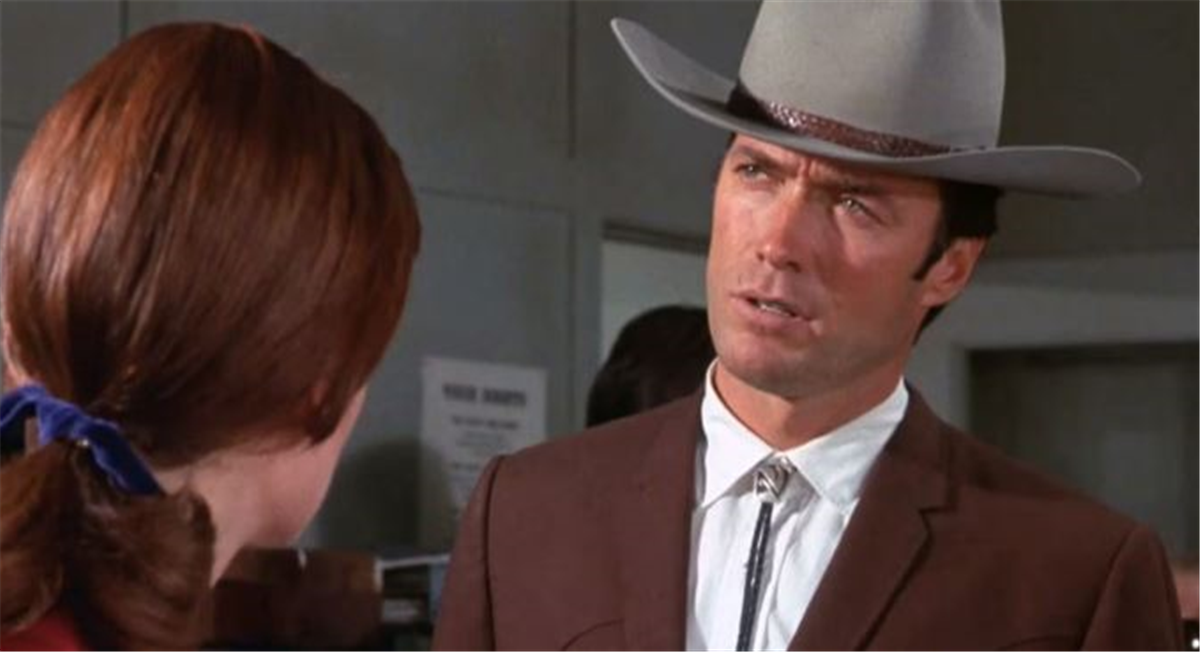Die Hard and Terminator 2: Judgment Day are often brought up when discussing the most influential action films of all-time, but the 1971 cop thriller Dirty Harry deserves to be in the conversation. While its premise alone isn’t that different from a multitude of other police procedural and murder mystery films, Dirty Harry succeeded in launching Clint Eastwood as the most iconic American movie star of his era. Eastwood may have courted an overseas marker with his work on “The Man With No Name Trilogy,” but it was thanks to his work with director Don Siegel that Dirty Harry became so acclaimed. Dirty Harry ended up inspiring four direct sequels, but the first time, Eastwood and Siegel first worked was together on the neo-western action thriller, Coogan’s Bluff.
Siegel certainly fit the definition of a “working director,” as he has been making a multitude of science fiction B-movies, cop thrillers, low budget horror films, and Hollywood melodramas since his career kicked off in the early 1940s. While his 1956 classic Invasion of the Body Snatchers was hailed as a breakthrough for the ways in which it examined Cold War politics, it was really the collaborations with Eastwood that earned Seigel the distinction of being one of the industry’s strongest action filmmakers. While it’s easily the weakest of the five films that they would end up making together, Coogan’s Bluff laid the groundwork for Dirty Harry to succeed.
What Is ‘Coogan’s Bluff’ About?

Coogan’s Bluff managed to combine a traditional action movie premise with neo-western themes, as Eastwood stars as the Arizona deputy sheriff Walt Coogan, a man who plays by his own rules. The movie follows Coogan as he travels to New York City to extradite a dangerous criminal, James Ringerman (Don Stroud). After Ringerman pulls off a daring escape, Coogan must find Ringerman and bring him to justice, even if that means breaking all the rules of the law that the New York Police Department had in place.
Coogan’s Bluff is a flawed film with occasional flashes of brilliance, as it was clear that Eastwood and Siegel weren’t quite able to capture the dark and gritty tone that they would eventually set with Dirty Harry. Eastwood presented an interesting challenge for American audiences, as he was best known for his roles in western films where he played gunslingers. Coogan’s Bluff sought to solve this issue by coding Coogan as a deliberately “old-fashioned” law enforcement officer who had more in common with a cowboy than any of the other cops who were working in New York. Although the allusions to the western genre were less than subtle, it did indicate that Eastwood would be able to transfer his gunslinger persona to a more modern environment. Dirty Harry may not be deliberately set up as a neo-western, but the themes of “street justice” and the addictive nature of the profession were certainly indebted to the classics of the genre.
How Did ‘Coogan’s Bluff’ Inspire ‘Dirty Harry?’

Coogan’s Bluff’s biggest failings were because it wasn’t able to get as dark as Dirty Harry would end up being. Coogan’s Bluff is shackled with many of the more “commercial” elements that Dirty Harry would end up leaving out, such as the underdeveloped love interest and the attempts at comedic relief. Perhaps the most striking difference between the two projects is the way in which Siegel developed his main antagonist. While Ringerman is treated as a dangerous threat, he lacks the sinister edge that made Andy Robinson’s performance as the serial killer Scorpio so terrifying in the first Dirty Harry film. Coogan’s Bluff laid the groundwork for what a serial killer manhunt thriller would look like, but it was up to Dirty Harry to fulfill the concept to its fullest potential.
Coogan’s Bluff was responsible for shaping Eastwood into an anti-hero who didn’t fit traditional definitions of what a protagonist looked like. Coogan is sharp, unassuming, and doesn’t see the value in teamwork because he doesn’t trust anyone he doesn’t know personally. While Coogan’s Bluff is a far more crowd-pleasing adventure film than Dirty Harry ended up being, the depiction of a somewhat cynical lawman who didn’t need anyone else’s help was virtually identical, though Coogan’s Bluff ultimately didn’t push this concept far enough. While Coogan’s Bluff does end with some impressive motorcycle chases, Dirty Harry would avoid these more overt action scenes in favor of sustained moments of anxiety and suspense.
Clint Eastwood and Don Seigel Had a Great Partnership
Siegel and Eastwood quickly proved to be well-suited to working with each other, and their collaborations deserve to be cited when discussing the all-time greatest actor-director partnerships, such as John Wayne and John Ford, Martin Scorsese and Robert De Niro, and Quentin Tarantino and Samuel L. Jackson. Although Dirty Harry would end up becoming one of the greatest action films of all-time, the pair also worked on the underrated western Two Mules For Sister Sara, and the neo-western thriller The Beguiled, and the prison break classic Escape From Alcatraz. Siegel sadly died in 1991, and never returned to direct any of the Dirty Harry sequels. However, it seemed as if Eastwood drew a lot from his influence when he started his own career behind the camera. Future classics like Million Dollar Baby, Mystic River, and Unforgiven may not have been possible without the effect that Siegel had on Eastwood’s career.
